Disclosure: This article contains affiliate links. We may earn a commission from purchases at no extra cost to you, which helps our travel content.
The morning mist hovered over the Snake River like a spectral guardian, slowly dissipating as the first rays of sunlight pierced through the towering basalt walls of Hells Canyon. Standing at the put-in point near Lewiston, Idaho, I felt that familiar flutter of anticipation in my chest—the same sensation I've experienced before every significant wilderness adventure from the Scottish Highlands to the remote rivers of Southeast Asia. But this place was different. At nearly 8,000 feet deep in some sections, Hells Canyon isn't just North America's deepest river gorge; it's a primal landscape that demands both respect and wonder. After years of guiding others through natural wonders as a park ranger, I found myself drawn to this rugged wilderness border between Idaho and Oregon, eager to experience its legendary Class IV rapids on a week-long journey that would test my mettle and reawaken my connection to wild waters.
Preparing for the Rapids: Gearing Up in Lewiston
Lewiston sits at the confluence of the Snake and Clearwater Rivers, serving as the perfect gateway to Hells Canyon adventures. After riding my trusty Triumph Tiger across the rolling Palouse hills to reach this river city, I spent two days acclimatizing and preparing for the journey ahead.
I partnered with Hells Canyon Adventures, one of several outfitters based in the area who offer multi-day expeditions. While experienced rafters can obtain permits for private trips, I'd recommend first-timers join a guided expedition—the local knowledge is invaluable when navigating rapids with intimidating names like Wild Sheep and Granite Creek.
The outfitter provided most essential gear, but I brought my own dry bag for personal items and camera equipment. Having tested numerous dry bags in Scotland's notoriously wet conditions, this particular model has proven itself waterproof even when briefly submerged—a distinct possibility when hitting the bigger rapids.
Lewiston's outdoor shops offer last-minute supplies, but prices run higher than online retailers. I stocked up on quick-dry clothing, river sandals with good grip, and a wide-brimmed hat before departure. One item worth investing in is a quality waterproof camera to capture the heart-pounding moments without worrying about water damage. Mine has survived countless dunks in rivers across three continents and still records flawlessly.
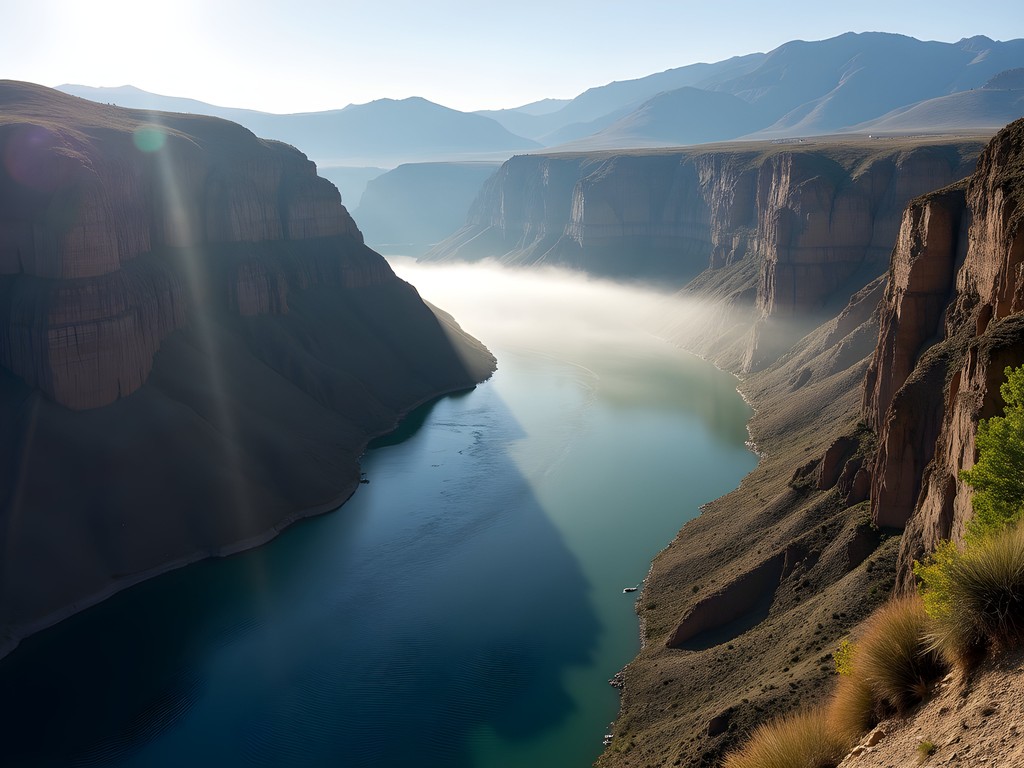
💡 Pro Tips
- Book your rafting trip at least 3 months in advance during peak season (June-August)
- Request a detailed packing list from your outfitter and follow it precisely
- Consider purchasing a waterproof phone case rather than risking your device
The Wild Heart of Hells Canyon: Navigating Class IV Rapids
Our journey began with a jet boat ride from Lewiston deeper into the canyon—a thrilling primer for what lay ahead. The canyon walls rose dramatically on either side, their basalt faces telling geological stories spanning millions of years. As a park ranger, I've developed the habit of reading landscapes, and Hells Canyon offers an open book of natural history that rivals any I've encountered.
The first day eased us in with Class II and III rapids, allowing our group of eight adventurers to find our rhythm with the river. Our guide, Maria, a 15-year veteran of these waters, shared knowledge that no guidebook could provide—the subtle changes in water patterns that signal submerged rocks, the precise angle to approach each rapid, and the indigenous history of the canyon.
Day three brought us to Wild Sheep Rapids, a Class IV monster that sent adrenaline coursing through my veins. The thunderous roar grew louder as we approached, and I tightened my grip on the paddle. The raft plunged into the churning whitewater, momentarily disappearing beneath a wall of spray before rocketing upward again. We worked in perfect unison, responding to Maria's commands with precision born of two days' practice.
"Hard forward!" she shouted as we approached the rapid's final drop, and our paddles cut through the water in perfect synchrony. The raft bucked like a wild horse, water crashing over the bow, but we maintained our line through the maelstrom.
Emerging from Wild Sheep, soaked and exhilarated, I felt a profound connection to this untamed place—a sensation familiar to me from motorcycle journeys through remote landscapes, yet uniquely intensified by the immediacy of the rushing water.

💡 Pro Tips
- Listen carefully to your guide's instructions - they know exactly how to navigate each rapid safely
- Maintain a wide stance in the raft with feet wedged securely under the tubes for stability
- Practice the 'high-side' maneuver before hitting big rapids - it can prevent a flip in dangerous situations
Riverside Camping: Nights Under Canyon Stars
Each evening, we made camp on sandy beaches tucked between the canyon walls, establishing a rhythm that connected us to this ancient landscape. The outfitter provided surprisingly comfortable sleeping arrangements—sturdy tents and thick sleeping pads that made the transition from day's exhilaration to night's tranquility seamless.
Dinner became a communal celebration of the day's adventures, with guides transforming into skilled chefs, preparing meals that defied the wilderness setting. Over fire-grilled salmon and Dutch oven cornbread, we shared stories from the day's journey, our voices occasionally drowned out by the river's constant conversation with the canyon.
After dinner one night, I hiked a short distance from camp to a rocky outcrop overlooking the river. The canyon walls framed a ribbon of sky studded with stars untainted by light pollution. In my years ranging from the Pacific Northwest to the Scottish Highlands, I've witnessed many impressive night skies, but Hells Canyon's star canopy felt particularly intimate—as if the narrow gorge created a focused window to the cosmos.
My headlamp proved invaluable during these evening explorations, providing reliable illumination while keeping my hands free to scramble over rocks or photograph the night sky. I've tried various models over years of night hiking, but this one offers the perfect balance of brightness, battery life, and comfort for wilderness adventures.
At one remarkable campsite, ancient petroglyphs adorned a smooth rock face near our tents—geometric shapes and animal figures etched by indigenous hands centuries ago. As someone fascinated by the intersection of human creativity and natural spaces, discovering these riverside galleries was a profound experience that connected our modern adventure to the canyon's long human history.
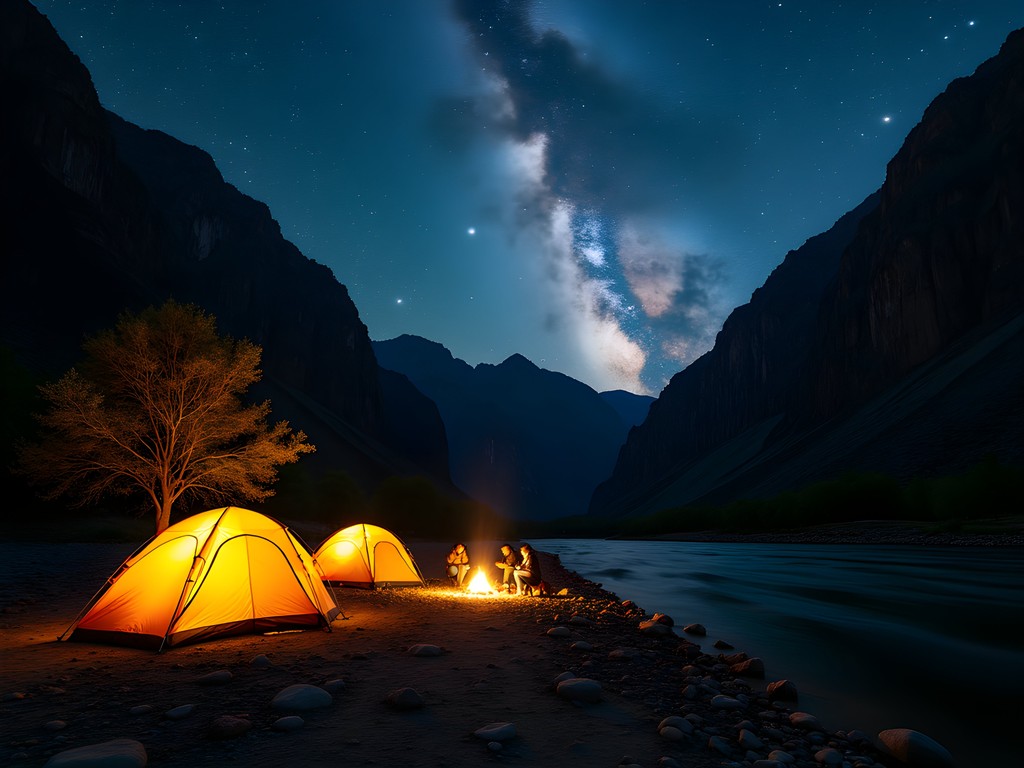
💡 Pro Tips
- Pack a lightweight camp pillow for better sleep - the outfitter's gear is good but personal comfort items make a difference
- Bring a small notebook for journaling - the disconnect from technology creates space for reflection
- Take short evening hikes away from camp for solitude and wildlife viewing opportunities
Canyon Ecology: Wilderness Beyond the Rapids
Between the adrenaline-pumping rapids, Hells Canyon revealed itself as an ecological treasure that stirred my park ranger sensibilities. The dramatic elevation changes create distinct life zones, from the riverside riparian areas to the arid sage-covered slopes above. During calm stretches of river, our guide pointed out bighorn sheep navigating seemingly impossible cliff faces with casual confidence.
One afternoon, we beached the rafts to hike up a side canyon where a crystalline creek tumbled down to meet the Snake. The temperature dropped noticeably as we entered this microclimate, surrounded by ferns and wildflowers that contrasted sharply with the sun-baked main canyon. Maria identified medicinal plants used by the Nez Perce people who historically inhabited these lands, adding cultural context to the botanical diversity.
The canyon's unique climate has created what ecologists call a 'sky island' effect—isolated ecosystems that evolved with limited outside influence. As someone who's documented similar phenomena from Scotland to Southeast Asia, I found Hells Canyon's biological isolation particularly compelling.
Wildlife encounters punctuated our journey. Ospreys plunged into the river for fish, otters played along the shoreline, and one memorable morning, we spotted a black bear ambling along a distant ridge. I captured these moments with my telephoto lens, which has accompanied me through national parks worldwide. The lens's reach allowed intimate wildlife photography without disturbing the animals—a practice I've always advocated as a park ranger.
What struck me most was the resilience of life in this seemingly harsh environment. Plants clung to minuscule cracks in vertical rock faces, raptors nested on inaccessible ledges, and fish thrived in the powerful current. The canyon isn't merely a geological wonder but a complex living system that has adapted to extremes of temperature, water flow, and elevation.

💡 Pro Tips
- Bring compact binoculars for wildlife spotting during calmer river sections
- Ask your guide about seasonal ecological changes - the canyon transforms dramatically throughout the year
- Learn to identify a few key plant species before your trip to enhance your appreciation of the landscape
Cultural Crossroads: Human History Along the Snake
While the natural features of Hells Canyon dominate the experience, the human history woven through this landscape adds compelling depth to the journey. Throughout our expedition, we encountered evidence of the diverse peoples who have called this rugged canyon home—from indigenous pictographs to abandoned homesteads perched on unlikely terraces.
At Kirkwood Historic Ranch, a preserved homestead accessible only by river or trail, we took a fascinating detour into pioneer life. The ranch buildings, dating from the 1890s, offer a glimpse into the determined spirit of those who carved out existence in this remote canyon. As someone who's documented historical sites across continents, I found the ranch's isolation particularly striking—these settlers lived weeks away from the nearest town, dependent entirely on their resourcefulness.
More moving were the sites associated with the Nez Perce people, whose connection to this canyon spans thousands of years. At one protected location, our guide showed us stone tools dating back centuries, carefully explaining the traditional fishing techniques used to harvest salmon from the powerful river.
"The canyon remembers," Maria told us as we drifted past a rocky shore where indigenous peoples once gathered for seasonal fishing. "Every culture that's passed through has left its mark, but none have truly tamed this place."
I've long been fascinated by the intersection of human creativity and wild places, from motorcycle journeys to remote villages in Southeast Asia to exploring abandoned tunnels in Eastern Europe. Hells Canyon presents a unique perspective on this relationship—a place where human presence has always been tenuous, defined by adaptation rather than domination.
One evening, a local Nez Perce elder visited our camp, sharing stories that connected the dramatic landscape around us to centuries of indigenous knowledge. His perspective transformed how I viewed the canyon—not as wilderness separate from humanity, but as a place shaped by thousands of years of human relationship with river and rock.

💡 Pro Tips
- Visit Kirkwood Historic Ranch if your itinerary allows - the preserved buildings offer fascinating insights into pioneer life
- Respect all archaeological sites and never remove artifacts - many are protected by federal law
- Ask your guide about indigenous place names and their meanings for a deeper cultural understanding
Final Thoughts
As our rafts finally glided into the calm waters near the journey's end, I felt the familiar bittersweet sensation that accompanies departure from places that have worked their way beneath your skin. Hells Canyon had revealed itself as far more than an adrenaline playground—it's a living museum of geology, ecology, and human history bound together by the ever-flowing Snake River. The week spent navigating its rapids and sleeping beneath its stars reconnected me to the elemental joy of wilderness immersion that first drew me to become a park ranger. Whether you're seeking heart-pounding whitewater action, wildlife encounters, or simply escape from the digital deluge of modern life, this magnificent gorge delivers with raw authenticity. As the Scottish Highlands shaped my childhood understanding of wild places, Hells Canyon has now carved its own place in my ranger's heart—a reminder that the most profound adventures often happen where nature's power remains untamed and respected.
✨ Key Takeaways
- Hells Canyon offers world-class whitewater rafting through North America's deepest river gorge
- The multi-day journey provides a perfect balance of adrenaline-pumping rapids and wilderness immersion
- Beyond the thrills, the canyon presents remarkable ecological diversity and fascinating human history
- Guided trips from Lewiston provide the safest and most enriching experience for most adventurers
📋 Practical Information
Best Time to Visit
June through August for optimal water levels and weather
Budget Estimate
$1,500-2,500 per person for a guided week-long trip, including equipment and meals
Recommended Duration
5-7 days for a full canyon experience
Difficulty Level
Challenging - Previous Rafting Experience Recommended
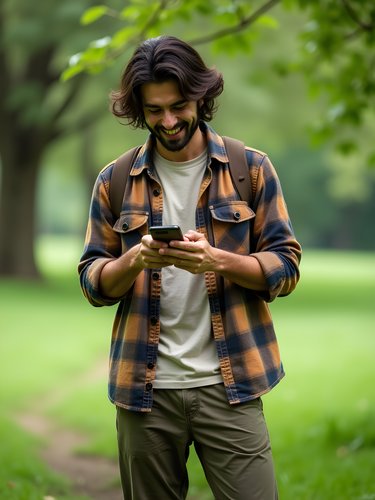
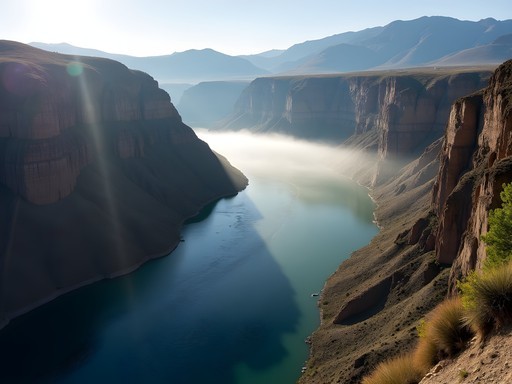
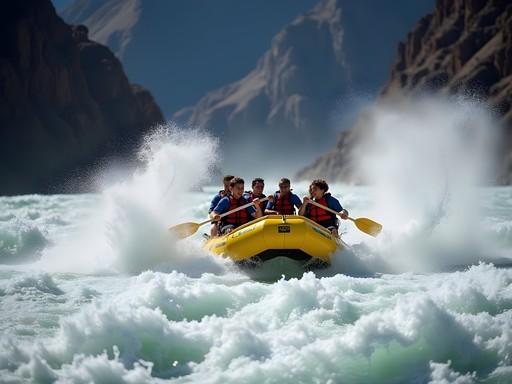
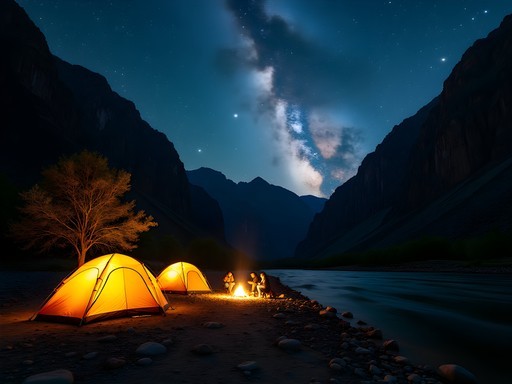
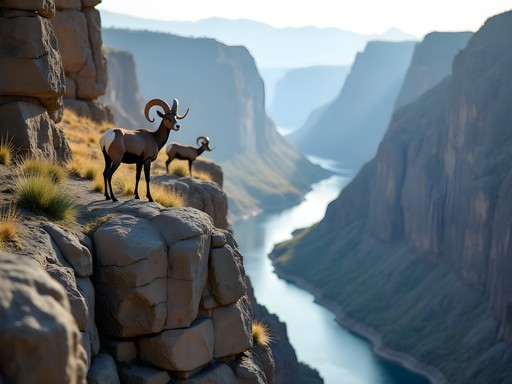











Comments
islandlife
Those night sky photos are INCREDIBLE! Never seen stars like that before. Adding this to my bucket list right now!
redbuddy
Just booked for next summer! Can't wait!
Brady Morales
You're going to have an amazing time! Feel free to DM me if you have any questions before your trip.
Sage Dixon
Brady, your post transported me right back to my own Hells Canyon adventure three years ago! That first plunge into Granite Rapids still haunts my dreams (in the best way). One tip for anyone planning a trip: the best time to go is actually late August/early September when the water levels create that perfect balance between exciting rapids and navigable passages. Plus, the canyon walls glow with this incredible amber light in the late summer evenings. For anyone worried about the intensity, I went with my 65-year-old dad who had zero rafting experience, and while he was terrified at first, by day two he was whooping louder than anyone! Just make sure you have a good dry bag for your camera gear - learned that lesson the hard way when my first camera took a swim in the Snake River!
wanderlusttime
Pro tip for anyone doing the multi-day trips: bring baby powder! Sounds weird but it's a lifesaver when you're putting on a damp wetsuit every morning. Also, the stargazing Brady mentioned is incredible - zero light pollution. If you can time your trip during a meteor shower, DO IT!
luckyguide
Planning to go in September. What kind of gear would you recommend bringing? Is it worth investing in my own wetsuit or do the outfitters provide everything?
Gregory Boyd
Having done this trip three times now, I'd say the outfitters provide all the essential gear you need - helmet, PFD, and wetsuit. What they don't always mention is how useful a good pair of neoprene water shoes are. The volcanic rocks are sharp! Also bring a waterproof camera case, quick-dry clothes, and a good hat with a chin strap - the wind in the canyon can be fierce. September water levels are usually perfect - exciting but not overwhelming.
luckyguide
Thanks for the detailed advice! Will definitely look into proper footwear.
islandway
Just got back from Lewiston last week and did a 3-day trip through Hells Canyon! Your description of the morning mist over the Snake River is spot on. That first morning when you wake up on the riverside and see the canyon walls light up... magical. The guides told us this was an unusually high water year which made Wild Sheep and Granite rapids even more intense than normal. My arms are still sore from paddling!
Frank Garcia
Great write-up on Hells Canyon! I rafted there last summer and the ecological diversity you mentioned really struck me too. The contrast between the arid canyon walls and the lush riverside vegetation creates a fascinating microclimate. I'd add that the historical sites along the way - abandoned homesteads and Native American petroglyphs - add an unexpected cultural dimension to what most people think of as just an adrenaline adventure. Did you manage to spot any bighorn sheep during your trip? They were surprisingly abundant when I went through.
Brady Morales
Thanks Frank! Yes, we spotted two small groups of bighorns on the second day, perched impossibly high on the canyon walls. Amazing creatures!
blueblogger
How difficult would you say this is for first-timers? I've never done any rafting before but this looks amazing!
wanderlusttime
I did this as a beginner last year! They have different difficulty options. Start with a half-day Class II-III trip if you're nervous. The guides are super safety-focused.
blueblogger
Thanks so much! That's really helpful to know.
redbuddy
Those rapids look insane! Definitely adding this to my bucket list.
triptime
How was the water temperature in June? Thinking about going but wondering if I need a wetsuit?
Brady Morales
The water was chilly! Around 55°F in June. Our outfitter provided wetsuits as part of the package, and I'd definitely recommend using one, especially for the bigger rapids where you might get completely soaked.
Venture X
Premium card with 2X miles, $300 travel credit, Priority Pass